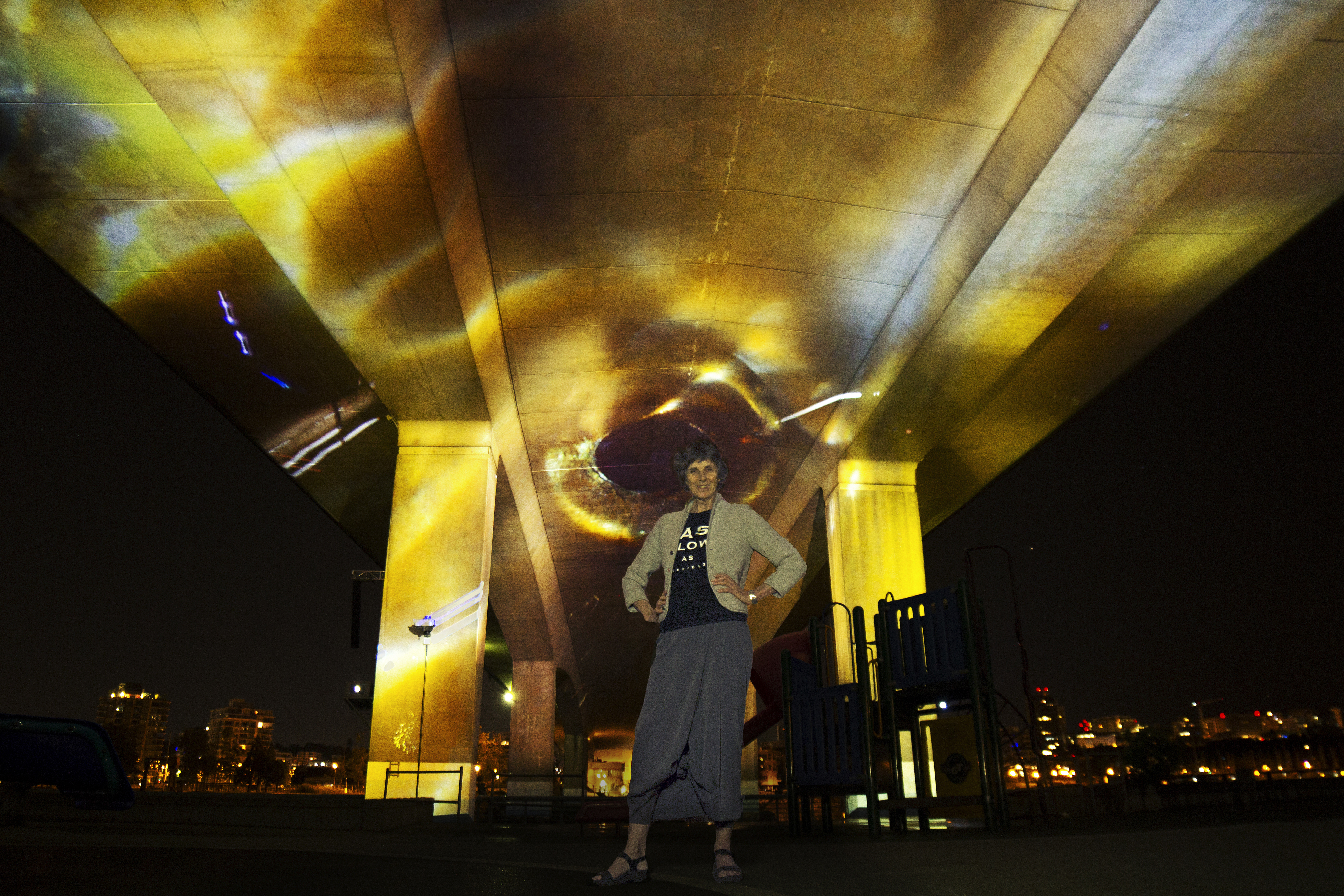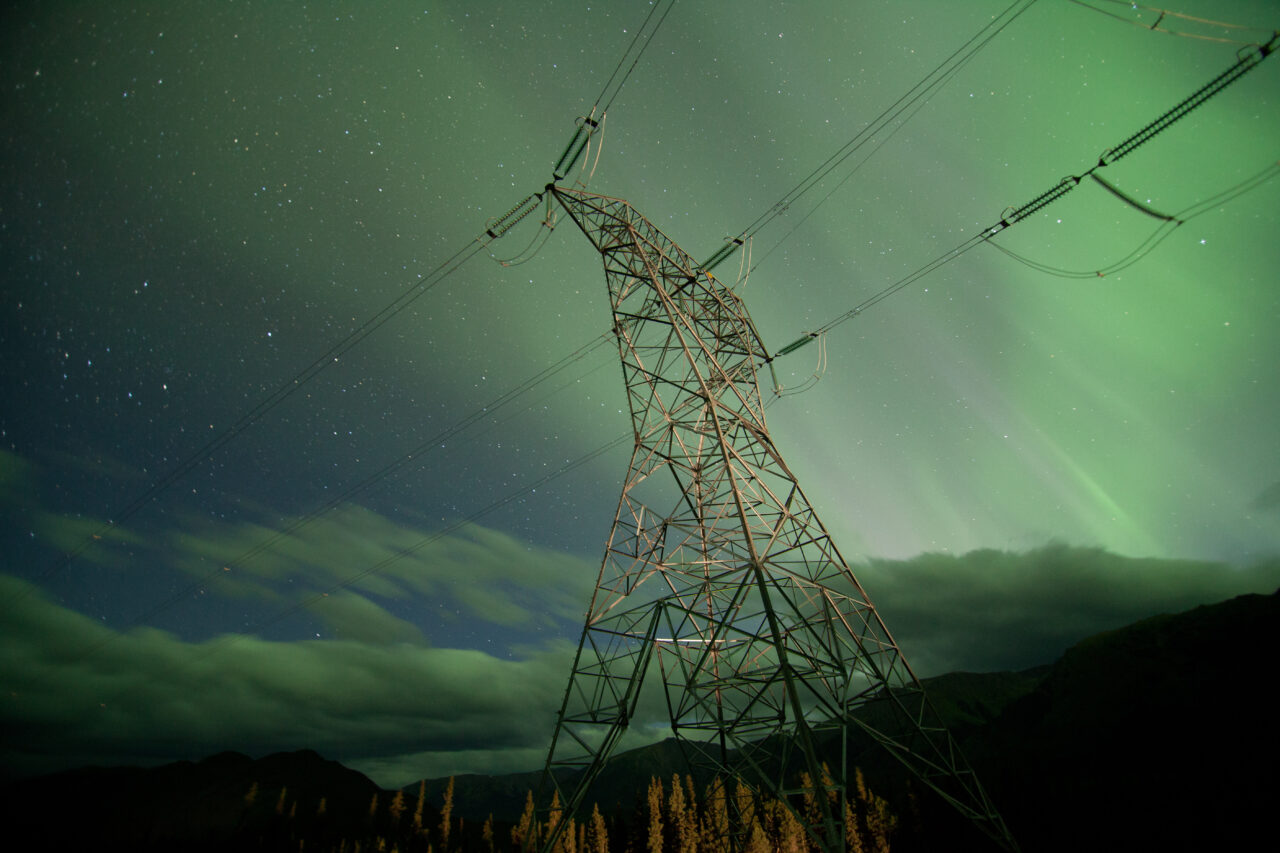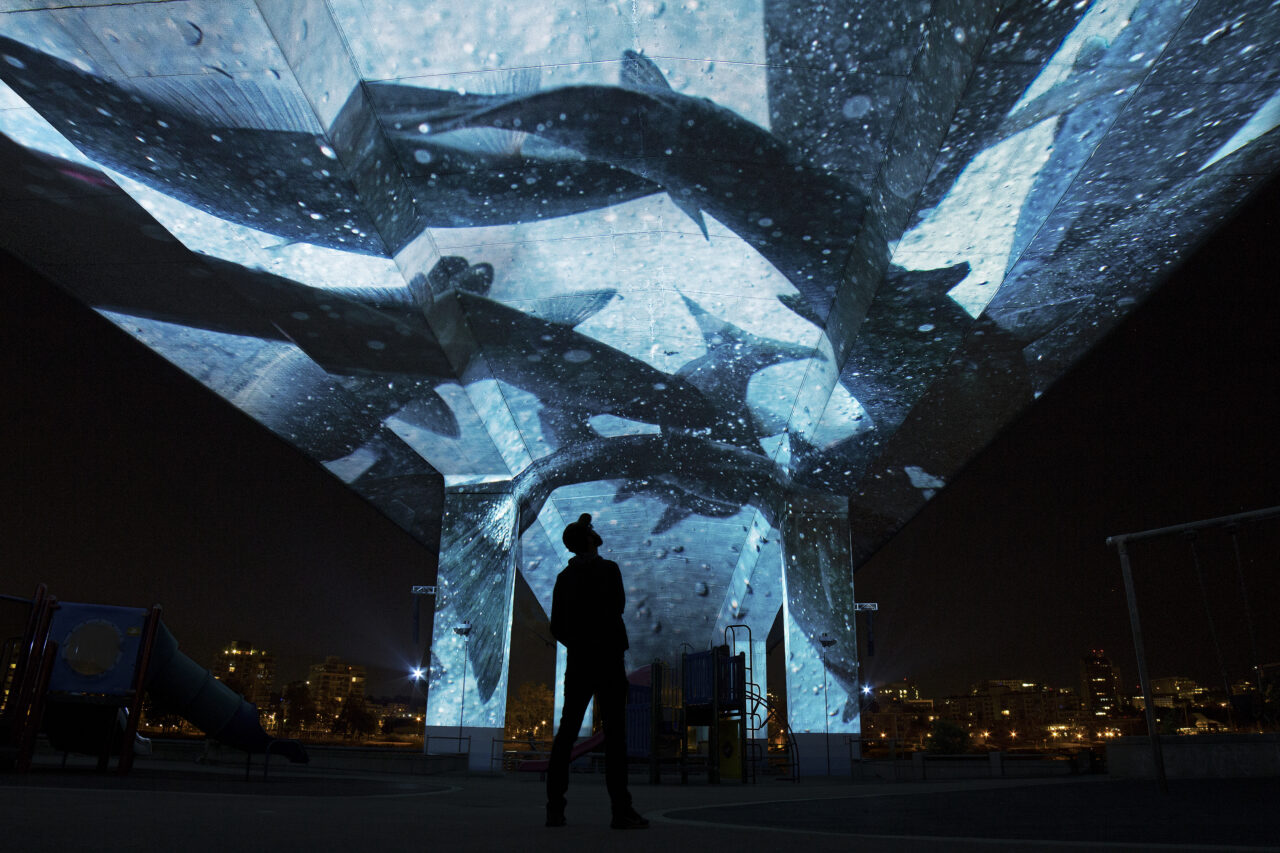Filmmaker Nettie Wild Embraces Complexity through Art

Posted on
The 2021 Honorary Doctorate recipient believes art is essential for navigating challenging issues.
Documentary filmmaker Nettie Wild was standing in hip waders holding a monitor in the middle of the herring spawn when she received a phone call. Expecting it to be a boat captain she’d been working with on an upcoming installation, Nettie was surprised to hear someone from Emily Carr University of Art + Design asking if she would accept an honorary doctorate.
“I’m so proud that an arts university thinks enough of my work to give me that degree. It means the world,” she says.
It’s a well-deserved honour for Nettie, who has been at the forefront of real-world cinema storytelling for decades and is continuing to push her craft into new territory.
Her documentary features, including A Rustling of Leaves: Inside the Philippine Revolution, Blockade, A Place Called Chiapas, and Fix: The Story of an Addicted City, have earned over 45 international and national accolades. And while her films have garnered a reputation for being political, she prefers, inspired by her theatre background, to call them “real-life high stakes dramas.”

Nettie on location for A Rustling of Leaves: Inside the Philippine Revolution
It’s this commitment to the content’s heartbeat that makes Nettie identify more with the label of artist than activist. She’s here to tell true stories through images that make you look twice—not to tell you what to think. “Art has this huge role to play in controversial times and I really believe that’s because it embraces complexity, and good art doesn't wag its finger at you.”
Nettie’s more recent work can be characterized by a visual foray into the abstract, framing the familiar in an unfamiliar way. “You just can't rest on your laurels as an artist, you have to really push yourself into the abstract. For me, that's what's been really fresh and new.”
Her 2016 feature film KONELĪNE: our land beautiful, celebrates the changing landscape of Tahltan territory in Northwestern British Columbia and the complicated human relationships tied to the land. The film, which won Best Canadian Feature Documentary at the 2016 Hot Docs Festival, portrays highly charged narratives not by pointing a finger, but through revealing the poetry in every scene.

From KONELĪNE: our land beautiful
For Nettie, poetry means finding beauty and complexity, and is effective in documentary cinema because “it encompasses darkness as well as light.” KONELĪNE achieves cinematic poetry even in the most unlikely of places, like scenes of a domineering transmission tower suspended from a helicopter above a clear cut section of the wilderness. Even those most opposed to the tower’s construction have told Nettie they can’t take their eyes off that sequence.
In 2017 Nettie continued to take documentary storytelling into new and surprising places with UNINTERRUPTED, an installation that used digital mapping to project images of the sockeye salmon run onto the Cambie Street Bridge. The spectacle, which averaged 1,000 viewers under the bridge every night from June until September, enthralled audience members of all ages.
Nettie knew she wanted to film the salmon in 2010, when she saw millions of them migrating up in Adams River. “I was blown away by seeing what looked like huge, colossal abstract art happening in the river,” says Nettie. “The patterns were unbelievable. And I thought, gosh, you know I just really want to do something with this, but it isn't a movie. It's something else.”
Despite being a self-proclaimed luddite, she has embraced technology in the evolution of her work. Projecting fish 30 feet high on a bridge for UNINTERRUPTED was a technological feat in and of itself, but Nettie is continuing to explore what’s possible by translating it into a virtual reality experience. “Technology has been a real dance,” says Nettie, “In VR, art is the technology.”

UNINTERRUPTED under the Cambie Street Bridge.
The VR version of UNINTERRUPTED is travelling this June 2021 to seven different settings on the Lower Mainland. Folks who book online will get an opportunity to be immersed in the magic of the salmon migration, and eventually the experience will be available overseas and online. Having taken images of the salmon from a river, to a bridge, to virtual reality, to around the globe, it’s unsurprising that Nettie has always been committed to the accessibility and distribution of her films.
When she was waist deep in the ocean receiving news of her honorary doctorate, Nettie and co-director Scott Smith were filming a new installation, Go Fish. Nettie disregards the notion that politics, like issues related to fish farming or overfishing, need to be explicitly woven into the visual story. Instead, Nettie takes a page from the surrealists, referencing Magritte as she describes the silhouettes of the sea lions who feast on the herring.
For someone who has received critical acclaim and numerous honours for her projects, Nettie’s definition of success is experiential. It’s not found in the prestige of awards but in the thrill of being on location and the feeling of knowing she’s nailed the shot. It’s sharing the films with the communities where she made them and hearing the laughter of recognition, or their collective awed silence. And it’s the collaborative working relationships she’s built over the years, like those with producers Betsy Carson and Rae Hull, and editor Michael Brockington.
Perhaps it’s these definitions of success that have Nettie Wild feeling, at 68 years, her most creative. It could also be her relentless questioning of the “why” behind every project, her purpose for being there in the first place. And increasingly, she says, the answer has been to make art.